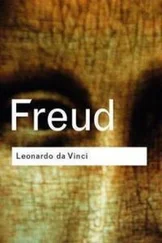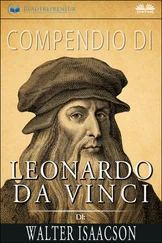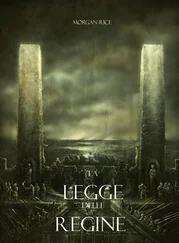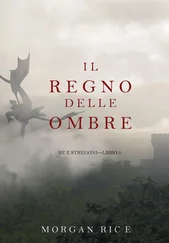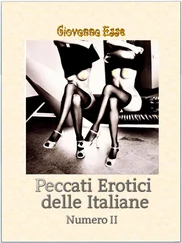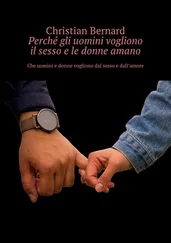In Anchiano lived the family of the notary Antonio di Ser Piero da Vinci who had brought to the village of about 350 souls a considerable wealth. Antonio was a notary public and had just celebrated his 80th birthday. At that time a rare milestone to be reached. He owned a modest property and a respectable bank account of 1,400 florins, which he had deposited at the house of the Florentine Monte Bank of the City of Florence, in the pawnshop of the City of Florence. His hopes depended on his eldest son, Piero, for whom he had planned a notarial career in Florence. The necessary intelligence and ambition were not lacking in the firstborn. A marriage had already been started with a rich Florentine woman who brought a considerable sum of money as a dowry. Then, in a hot summer, something unexpected happened, briefly interrupting Piero's career plans for his son.
The promising young Piero da Vinci regularly spent the sultry summers in the contemplative Vinci. This was also the case in the summer of 1451. He returned to Vinci to escape the heat in the overpopulated Florence and to abandon himself to the idleness and summer freshness of his native village. And it was precisely in this summer that a passionate but fateful relationship began with the young servant Catherine, Caterina di Meo Lippi, who had such a seductive charm that Piero could not resist. Too strong was the desire for the young woman. Catherine probably believed that he was really in love with her. The beautiful maidservant quickly became pregnant, which caused a great stir in Piero and his family, but at the time these things could be regulated with a certain naturalness. Nine months later, at 3 a.m. on April 15, 1452, "Lionardo" was born in Anchiano. The birth certificate indicated that he was the illegitimate son of the 24-year-old Piero da Vinci and the young maid Caterina.
That the mother and child had survived birth at the time was seen as a great gift from God. Her grandfather, Antonio di ser Piero da Vinci, noted the joyful event on the edge of an old 14th century notary's book which she used as a sort of family chronicle. As a sign of reverence for God, he meticulously noted both the exact date of Leonardo's birth and the baptism of his nephew, as well as the names of those present at the baptism. The note does not precisely indicate the place where Leonardo was born. He was almost certainly born in the country house of Piero da Vinci in Anchiano, where his young mother lived for a few years with the child. The informal and loving note of his grandfather did not change, however, the fact that Leonardo was the result of an "illegitimate relationship". His father, Piero, did not even think of marrying his mother, Caterina, because of the difference in social status. Moreover, Piero's marriage to a rich and noble Florentine girl had already begun. Even the strong and healthy newborn did not change the course of things. Neither Piero da Vinci nor his mother Caterina could be present at Leonardo's baptism. At that time the Catholic Church explicitly forbade it, because they had not resisted the temptation and had abandoned themselves before the wedding to their "carnal desires". The child was received into the communion of Christians, while the parents were repulsed because of their "morally reprehensible misconduct”.
Piero da Vinci's esteemed family of notaries was mentioned in documents as early as 1312. He enjoyed a high reputation in and around Vinci, and it is obvious that the ambitious model son had to marry appropriately. According to recent research hypotheses, for which, however, there is no clear evidence, the beautiful maid Caterina in Piero's family was originally from a Muslim family. It is even said that her family was slaves from Constantinople.
The circumstances in which Leonardo was born in Anchiano, however, marked his life forever: for better or for worse. Being born as an illegitimate child was considered a stigma that accompanied him and marked him throughout his life. Leonardo was unable to overcome either the strict rules of society or the hostile attitude of his dominant father - even when he later became a successful artist, this "childhood misfortune" continued to torment him. His mother Caterina took care of the lively child for as long as necessary and then quickly disappeared from the life of the da Vinci family. For several years also from the life of Leonardo.
The nature around Anchiano and around Vinci was ideal for growing up free and without worries. A carefree childhood that shaped the mind of the intelligent boy. With his grandfather Antonio and his uncle Francesco he explored the surroundings with the numerous waterways and mills during the long walks. The encounter with the impetuous force of water in this natural landscape was a decisive experience for Leonardo. Not only did his fascination with the element of water originate here, which accompanied him throughout his life, but also his ability to observe details. In fact, Leonardo drew with unprecedented precision for a child on paper supplied by his grandfather, the wheels of the mill with their gears and their interlocking movement. Leonardo loved to spend his days in the village of San Pantaleo, in the fields and on the shore around the small stream Vincio. Leonardo later significantly described this unspoilt landscape as a "maternal landscape". His mother Caterina lived here with her new family, whom Leonardo visited as soon as he could. About 50 kilometers east of Vinci was the then great metropolis of Florence, which was rich, opulent and sumptuous and where in the meantime his father Piero had set up a family suited to his social rank.
Life in the streets and squares of Florence meanwhile pulsed frantically and feverishly. The rich commercial city on the Arno was not only the undisputed cultural metropolis of the then known world, but also an extraordinary financial center that knew no restrictions either on the Italian peninsula or in Europe. In Florence the principles of the modern banking system were invented: banks, money loans, bills of exchange and interest rates . It was here that the transformation from forwarding agents to wealthy bankers took place, through the lending and the constant exchange with commercial activities. Among the first and then the most important banking families were the Bardi, Peruzzi and Acciaiuoli. These had branches in virtually all major European cities and exercised a monopoly on papal finances, influencing and financing the dynasties throughout Europe. The English King Eduard III then, in 1345, sent the banking families into bankruptcy, categorically refusing to repay the debt accumulated by the Hundred Years War against France. This was the great opportunity for the Medici family, who in turn built a widely branched banking house between 1348 and 1392, with several branches in major Italian and European cities. Florence became the centre of the Medici's banking activities and henceforth formed the basis for the subsequent unprecedented rise to become one of the richest and most powerful families of the time.
In this flourishing republic of the city, the patrician Medici family now pulled the strings discreetly but decisively und purposefully. The intrigues and deceptions were omnipresent, especially by the city's rival families. The Pazzi, Albizzi, Strozzi or Salviati, who were also immensely rich, longed for even more power and even more money. Piero da Vinci, Leonardo's father, had made the great leap to Florence, where he had begun to establish himself as a notary public. His brother Francesco also moved to Florence. From 1469 he belonged to the corporation of merchants of silk or Por Santa Maria. It was the largest corporation among the seven major arts in Florence. In his uncle Francesco, Leonardo saw a sort of substitute father. In fact, unlike his biological father, Francesco took care of Leonardo and became a reference figure in his adolescence. In Francesco's silk workshop in Vinci, Leonardo discovered both the charm of the colours and his extraordinary manual skills.
Читать дальше

